Abstract
The failure of l-leucine to stimulate ergot alkaloid production in a synthetic medium indicates that the previously observed stimulation by tryptophan and tryptophan analogues does not merely represent a nutritional effect. Tryptophan, but not mevalonate or 5-methyltryptophan, is able to overcome the inhibition of alkaloid synthesis by high levels of inorganic phosphate. Therefore, high phosphate levels seem to limit the synthesis of tryptophan; they may, in addition, prevent induction of alkaloid synthesis by preventing accumulation of tryptophan. Experiments which indicate a 2- to 3-fold temporary increase of intracellular free tryptophan and a 20- to 25-fold increase of tryptophan synthetase activity during the transition period between growth and alkaloid production phase are in agreement with the previously postulated induction of alkaloid synthesis by tryptophan. The latter experiments also indicate 4- to 6-fold repression of this enzyme by tryptophan.
Full text
PDF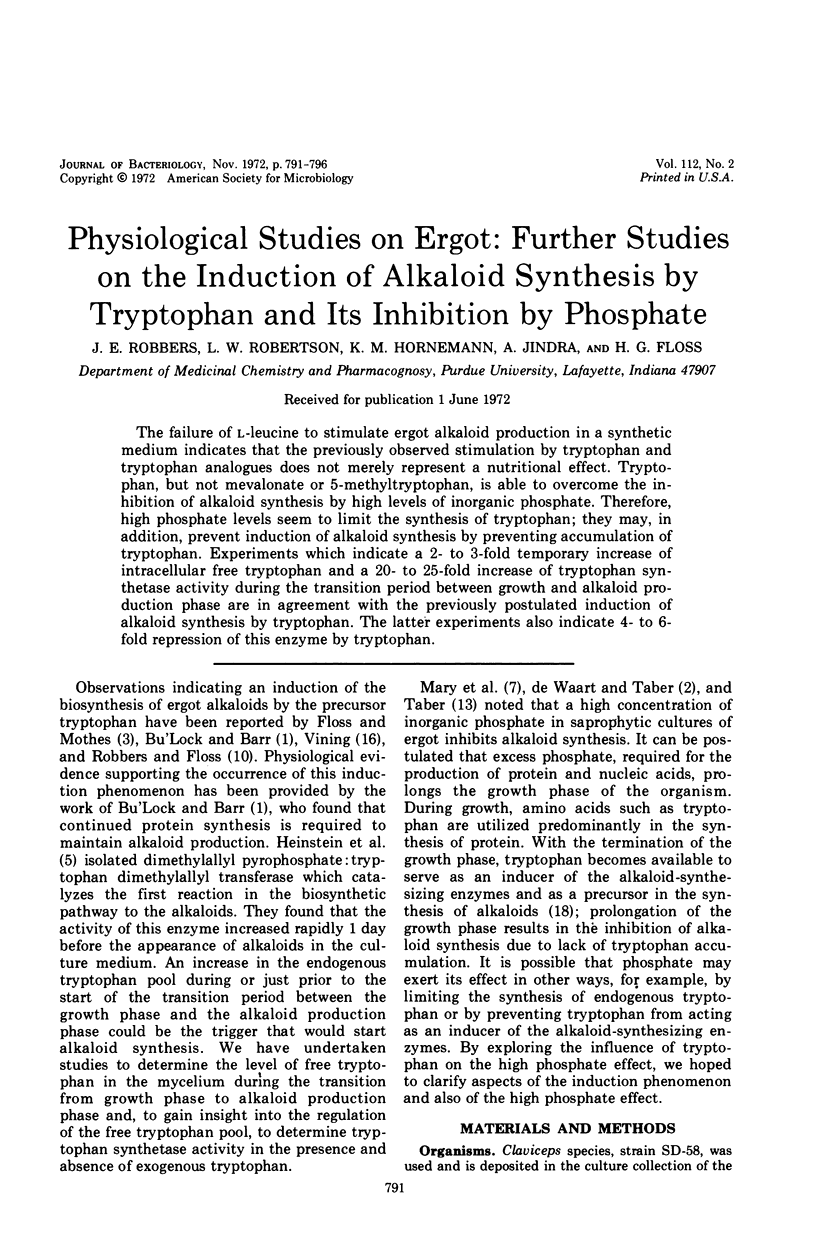
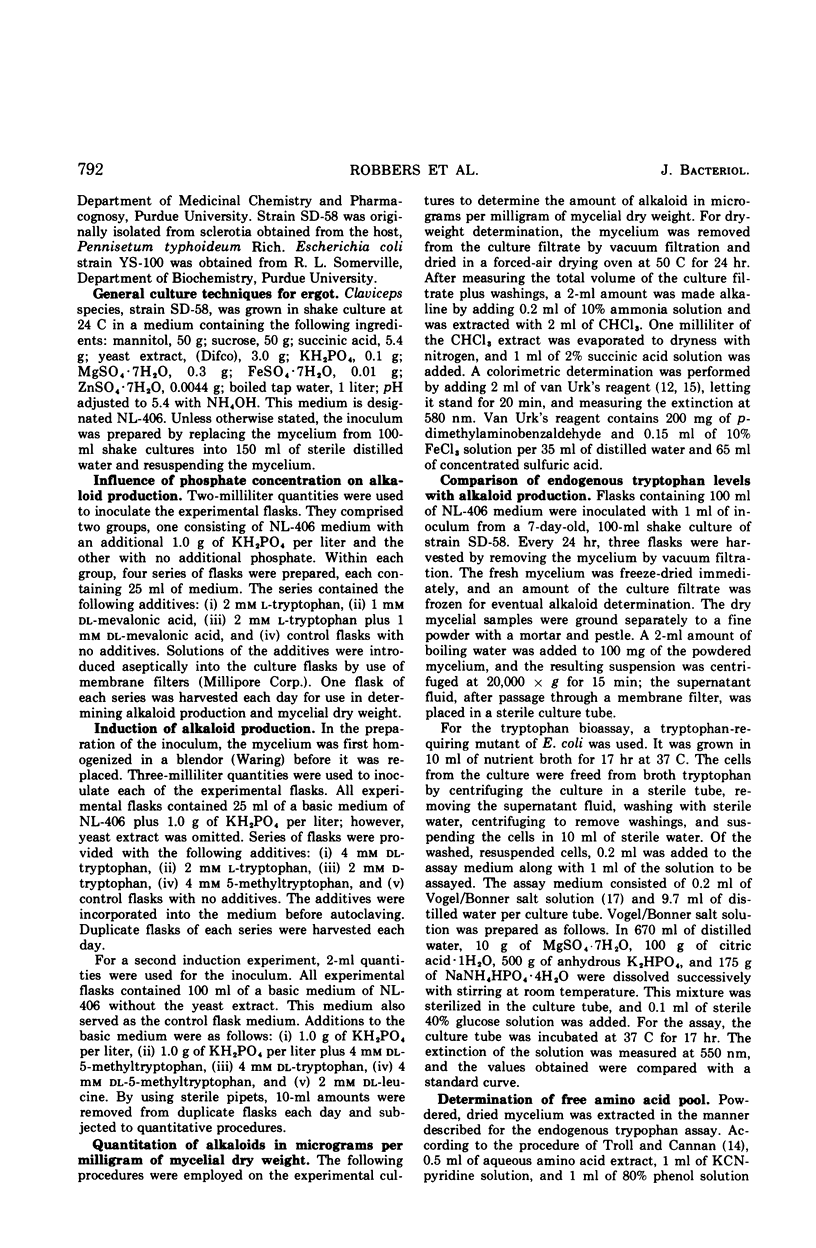
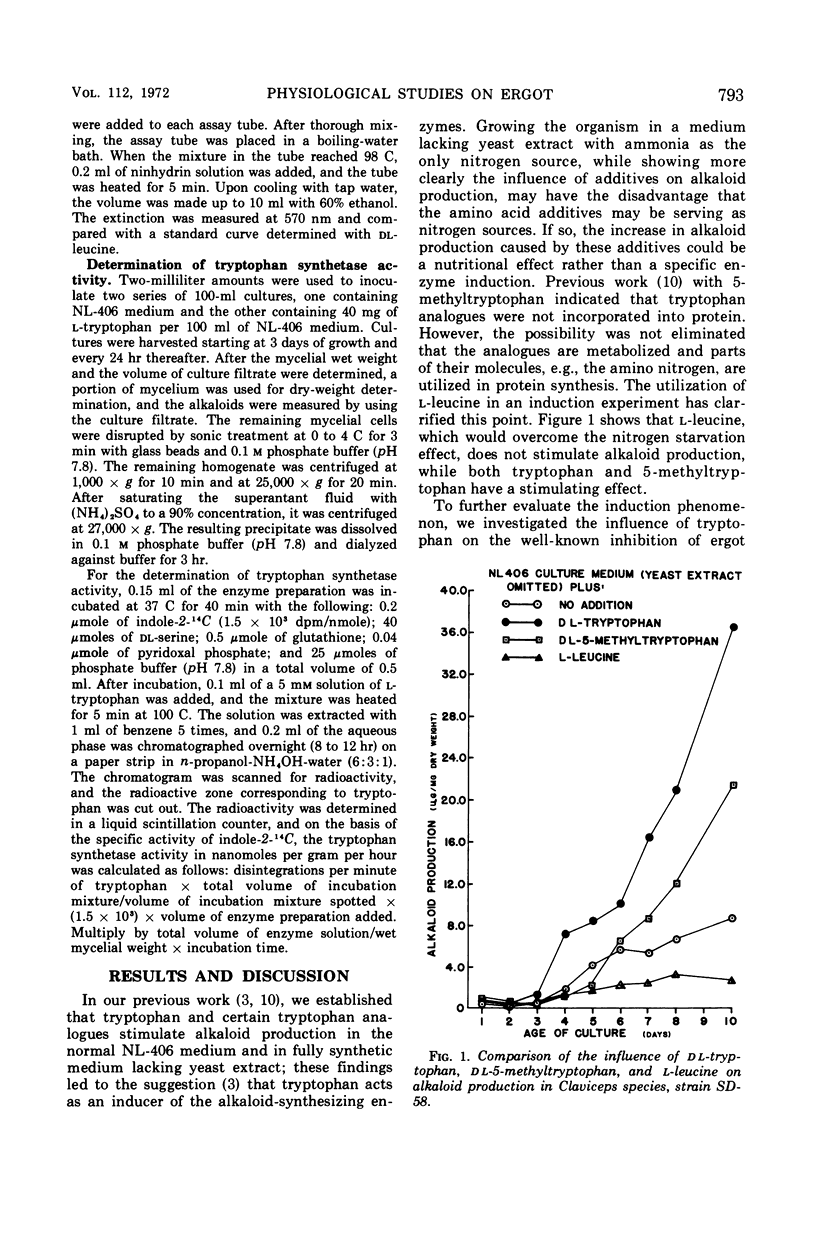
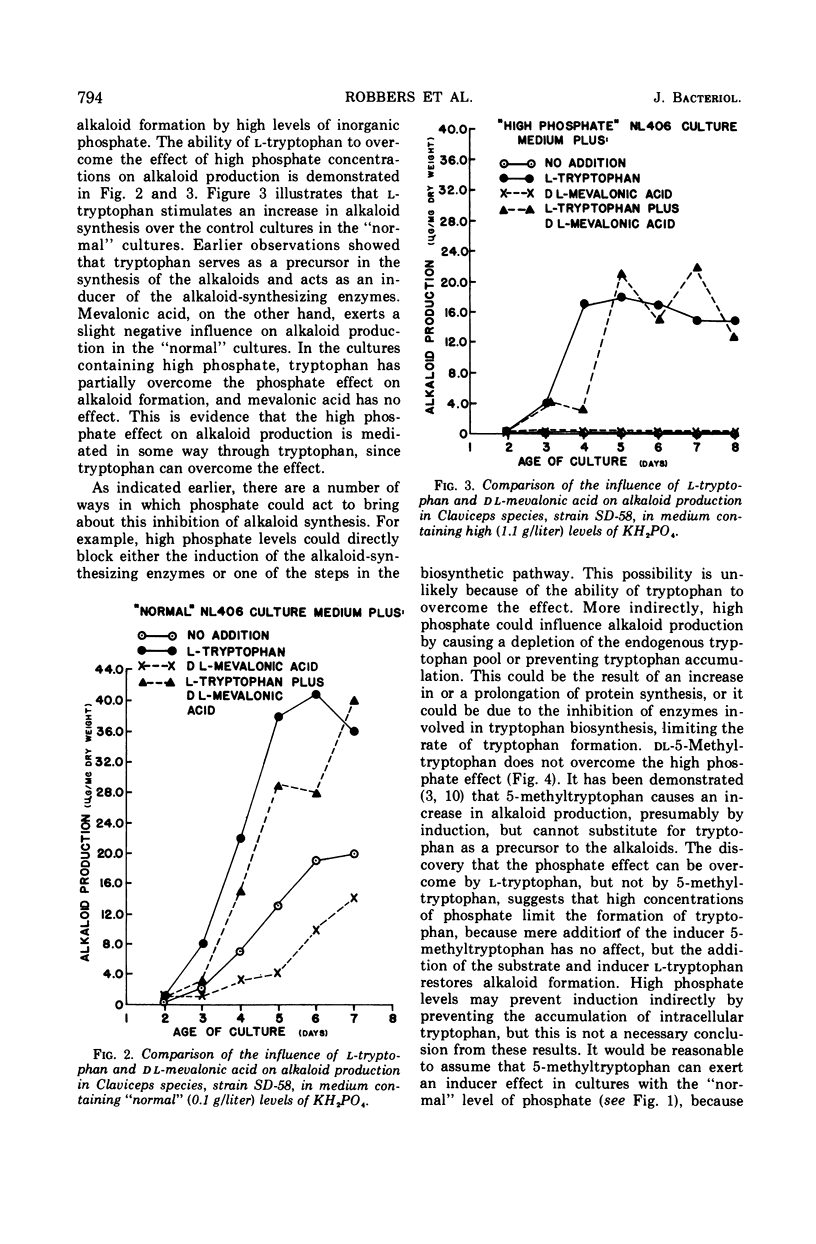
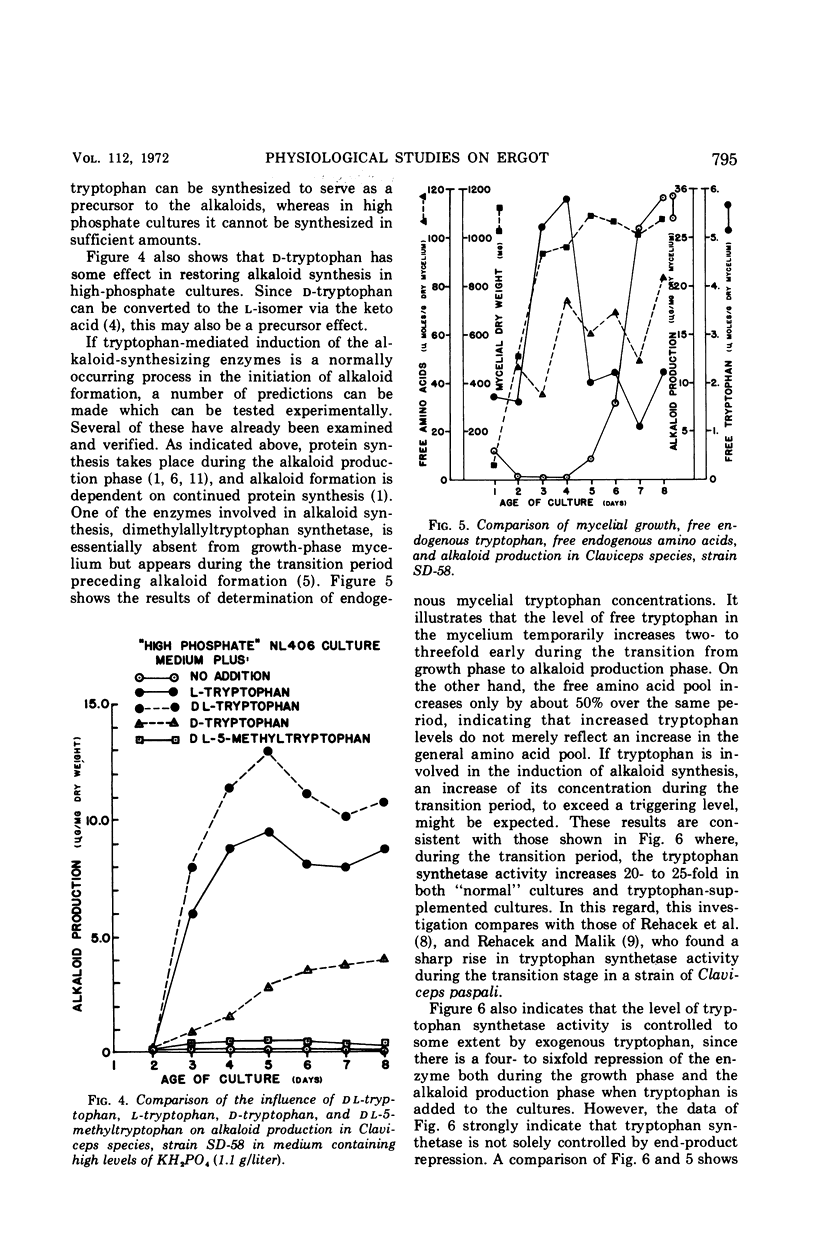
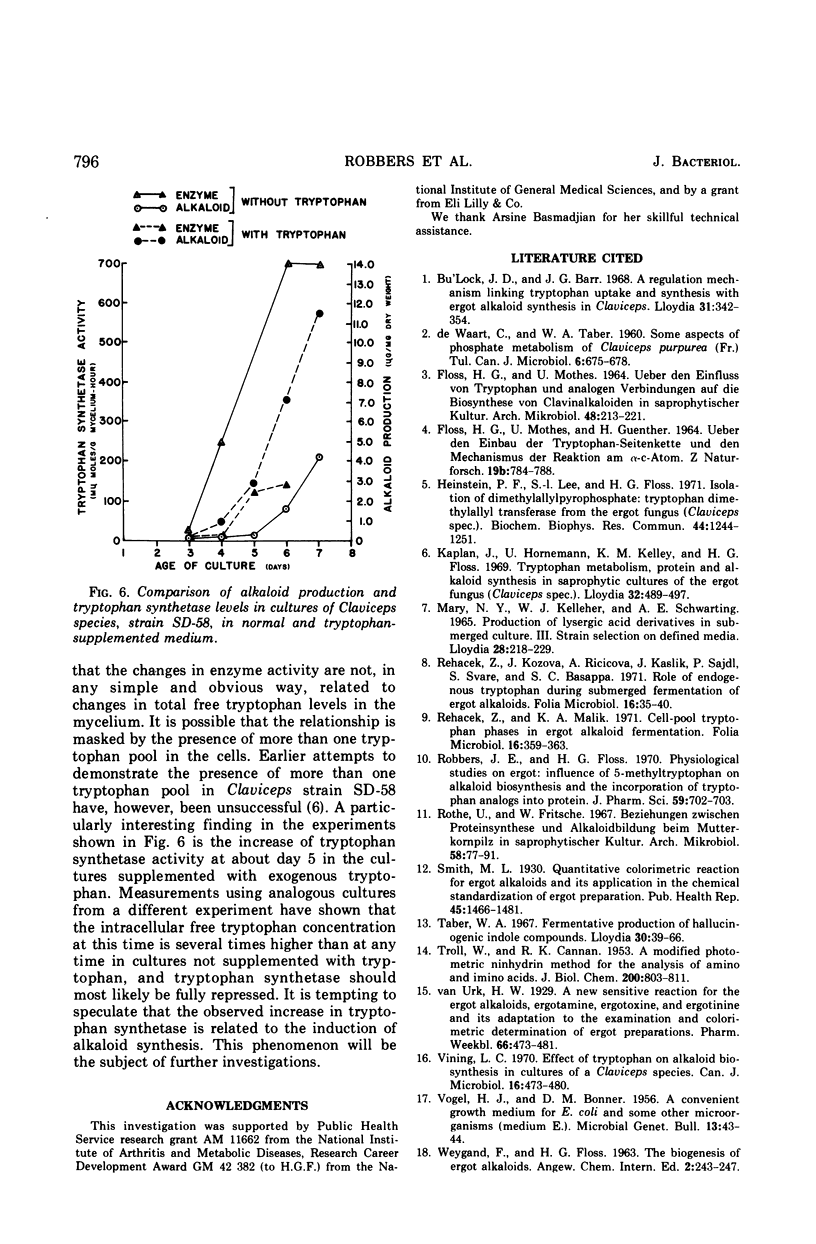
Selected References
These references are in PubMed. This may not be the complete list of references from this article.
- FLOSS H. G., MOTHES U., GUENTHER H. ZUR BIOSYNTHESE DER MUTTERKORNALKALOIDE. UBER DEN EINBAU DER TRYPTOPHAN-SEITENKETTE UND DEN MECHANISMUS DER REAKTION AM ALPHA-C-ATOM. Z Naturforsch B. 1964 Sep;19:784–788. [PubMed] [Google Scholar]
- FLOSS H. G., MOTHES U. UBER DEN EINFLUSS VON TRYPTOPHAN UND ANALOGEN VERBINDUNGEN AUF DIE BIOSYNTHESE VON CLAVINALKALOIDEN IN SAPROPHYTISCHER KULTUR. Arch Mikrobiol. 1964 Jun 2;48:213–221. [PubMed] [Google Scholar]
- Heinstein P. F., Lee S. I., Floss H. G. Isolation of dimethylallylpyrophosphate: tryptophan dimethylallyl transferase from the rgot fungus (Claviceps spec.). Biochem Biophys Res Commun. 1971 Sep;44(5):1244–1251. doi: 10.1016/s0006-291x(71)80219-x. [DOI] [PubMed] [Google Scholar]
- Kaplan H., Hornemann U., Kelley K. M., Floss H. G. Tryptophan metabolism, protein and alkaloid synthesis in saprophytic cultures of the ergot fungus (Claviceps sp.). Lloydia. 1969 Dec;32(4):489–497. [PubMed] [Google Scholar]
- Rehácek Z., Kozová J., Ricicová A., Kaslík J., Sajdl P., Svarc S., Basappa S. C. Role of endogenous tryptophan during submerged fermentation of ergot alkaloids. Folia Microbiol (Praha) 1971;16(1):35–40. doi: 10.1007/BF02887333. [DOI] [PubMed] [Google Scholar]
- Rehácek Z., Malik K. A. Cell-pool tryptophan phases in ergot alkaloid fermentation. Folia Microbiol (Praha) 1971;16(5):359–363. doi: 10.1007/BF02875754. [DOI] [PubMed] [Google Scholar]
- Robbers J. E., Floss H. G. Physiological studies on ergot: Influence of 5-methyltryptophan on alkaloid biosynthesis and the incorporation of tryptophan analogs into protein. J Pharm Sci. 1970 May;59(5):702–703. doi: 10.1002/jps.2600590527. [DOI] [PubMed] [Google Scholar]
- Rothe U., Fritsche W. Beziehungen zwischen Proteinsynthese und Alkaloidbildung beim Mutterkornpilz in saprophtischer Kultur. Arch Mikrobiol. 1967;58(1):77–91. [PubMed] [Google Scholar]
- TROLL W., CANNAN R. K. A modified photometric ninhydrin method for the analysis of amino and imino acids. J Biol Chem. 1953 Feb;200(2):803–811. [PubMed] [Google Scholar]
- Vining L. C. Effect of tryptophan on alkaloid biosynthesis in cultures of a Claviceps species. Can J Microbiol. 1970 Jun;16(6):473–480. doi: 10.1139/m70-080. [DOI] [PubMed] [Google Scholar]


